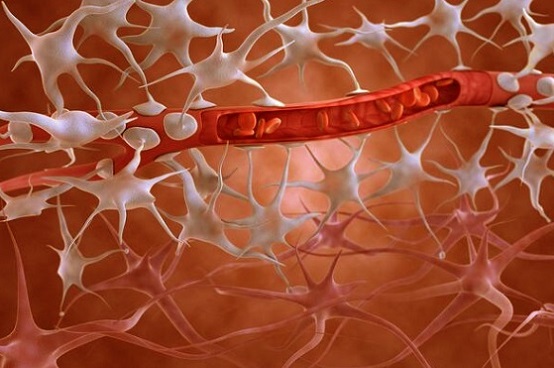Nikhil Prasad Fact checked by:Thailand Medical News Team Jul 11, 2025 5 months, 1 week, 6 days, 2 hours, 7 minutes ago
Medical News: Scientists Reveal Surprising Link Between Brain Barrier Damage and Neurological Illnesses
An international team of researchers from Axoltis Pharma (France), the University of Bern (Switzerland), Université Laval and Centre de Recherche du CHU de Québec (Canada), Tulane University (USA), Université de Tours (France), and Trinity College Dublin (Ireland), has discovered a disturbing common thread linking dozens of neurological diseases. Their research shows that damage to the brain’s natural protective barriers may play a key role in causing or worsening many of these illnesses.
 Hidden Brain Barrier Damage May Be Behind Many Neurological Diseases
Hidden Brain Barrier Damage May Be Behind Many Neurological Diseases
This
Medical News report highlights how these brain barriers—specifically the blood-brain barrier (BBB) and the blood-spinal cord barrier (BSCB)—are often disrupted in people suffering from conditions like Alzheimer’s, Parkinson’s, multiple sclerosis, epilepsy, and even psychiatric illnesses such as schizophrenia and bipolar disorder. The study found that at least 41% of all neurological disorders are linked to problems in these protective barriers, and this number could actually be much higher.
What Are Brain Barriers and Why Do They Matter?
The BBB and BSCB act like highly selective filters, protecting the brain and spinal cord by keeping harmful substances in the blood from leaking into the nervous system. These barriers are made up of tight connections between cells that form a sealed wall. When these tight junctions are damaged or weakened, toxins, immune cells, and even blood proteins can invade the brain tissue, sparking inflammation and damage.
The researchers explain that many neurological disorders show signs of these barrier breakdowns. For example, in Alzheimer’s disease, they noted reduced levels of critical proteins such as claudin-5 and occludin—key players in maintaining tight barrier junctions. They also observed abnormal leaks of substances like fibrinogen into brain tissues, a clear marker of barrier failure.
Evidence From 54 Different Diseases
The review covered 132 diseases and found direct proof of barrier disruption in 54 of them, including ALS, Huntington’s disease, multiple system atrophy, and epilepsy. It even extended to psychiatric conditions like schizophrenia and depression. In many of these cases, barrier breakdowns were seen before major symptoms appeared—suggesting that damage to the brain’s defenses might be an early warning sign or even a trigger for disease.
Blood tests and advanced imaging techniques like DCE-MRI (Dynamic Contrast-Enhanced MRI) helped detect leaks in the BBB. Elevated levels of barrier proteins in the bloodstream, especially occludin and claudin-5, were frequently seen in patients with severe neurological symptoms or rapid disease progression.
New Hope Through Brain Barrier Repair
Perhaps most promising is the researchers&r
squo; suggestion that repairing the BBB and BSCB could offer a new way to slow or even prevent neurological decline. A number of drugs are now being developed specifically to target and restore these barriers. One such drug, Pepinemab, has already entered clinical trials for Alzheimer’s and Huntington’s disease. It works by preventing damage to brain-supporting cells and strengthening tight junction proteins.
Other drug candidates aim to block harmful immune cells from crossing the barrier, or use synthetic materials to plug the leaks. Some are even targeting the sticky blood proteins that cause inflammation once the barriers are breached. This opens up a whole new treatment strategy—one that focuses not just on symptoms, but on preserving the brain’s natural shield from harm.
While more research is still needed, this growing body of evidence shows that repairing these protective barriers may offer new hope for people with hard-to-treat brain diseases. It also challenges traditional thinking by suggesting that many neurological illnesses might not just be about damaged brain cells—but about a leaky defense system that allows those cells to get hurt in the first place.
The study findings were published in the peer reviewed journal: Fluids and Barriers of the CNS
https://link.springer.com/article/10.1186/s12987-025-00688-z
For the latest on neurological diseases, keep on logging to Thailand
Medical News.
Read Also:
https://www.thailandmedical.news/news/how-peripheral-inflammation-affects-the-blood-brain-barrier-and-its-role-in-neurodegenerative-diseases
https://www.thailandmedical.news/news/australian-study-finds-that-those-with-post-covid-cognitive-issues-are-likely-to-suffer-from-blood-brain-barrier-disruption-and-glutamatergic-excitoto
https://www.thailandmedical.news/news/researchers-discover-way-to-allow-drugs-to-penetrate-through-the-blood-brain-barrier
